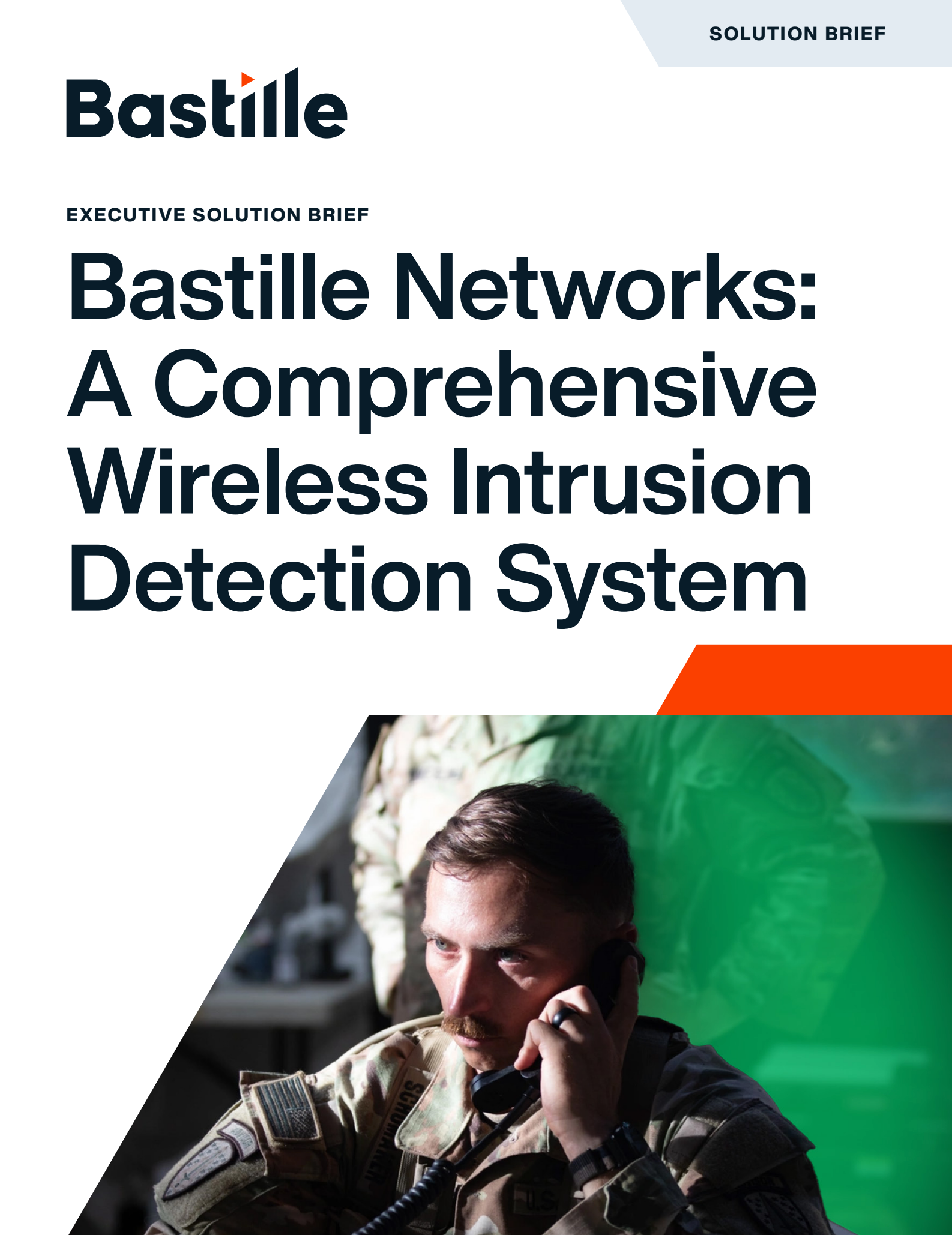
The Unseen Threat to AI Security
AI infrastructure has become a high-value target. From autonomous vehicle R&D labs to corporate AI clusters processing privileged, sensitive, or proprietary datasets, adversaries recognize the value in gaining access to AI models, training data, and inference processes.
Organizations spend millions on firewalls, endpoint detection, encryption, and zero-trust architectures to secure digital entry points. Yet one attack surface remains routinely overlooked: the wireless spectrum beyond Wi-Fi.
These detection gaps, referred to as wireless blind spots, are physical or frequency coverage areas where security teams lack visibility into wireless activity. They enable malicious actors or negligent insiders to operate covertly, bypassing traditional IT security controls.
What Creates a Wireless Blind Spot?
A wireless blind spot isn’t just a “dead zone” where Wi-Fi signals fade. It is any part of the wireless spectrum or physical environment that security tools cannot see. One of the most common causes is incomplete frequency coverage. Many wireless intrusion detection systems focus narrowly on Wi-Fi, leaving entire swaths of the spectrum, such as LTE, 5G, IoT protocols like Zigbee, Bluetooth, and other non-Wi-Fi transmissions, completely unmonitored. In these unseen ranges, an attacker can operate freely, using USB cellular modems, IoT gateways, or covert radios that transmit beyond the detection capabilities of security tools in the facility.
Even when a system has the correct frequency coverage, physical placement can still create vulnerabilities. Poorly positioned or insufficient sensors leave “shadow zones” in server rooms, data centers, research labs, and manufacturing floors where a device can quietly operate without ever crossing the security team’s radar.
Rogue or covert devices amplify the threat. Some devices appear innocuous but have covert wireless capabilities, such as a cable with a built-in Wi-Fi access point in the connector. Others arrive unintentionally, such as a contractor’s smartwatch or mobile phone, which quietly maintains a wireless connection to the outside world.
Finally, the rapid expansion of “shadow IoT” exacerbates the problem. As more tools and devices incorporate AI-enabled features, they also acquire wireless capabilities, sometimes without security teams being aware of it. Employees may unknowingly carry or deploy devices with LTE, 5G, or other wireless interfaces into restricted zones, bypassing security controls and creating covert network access that attackers can exploit.
The Unique Risk to AI Data and Operations
Wireless blind spots can have direct and devastating consequences for AI-driven environments. In some cases, attackers use them as covert channels to exfiltrate proprietary model files or sensitive datasets. Even air-gapped or otherwise isolated networks are vulnerable if an adversary plants a device that communicates over LTE or 5G, bypassing traditional network defenses entirely.
Other attacks focus on compromising the integrity of the AI itself. By exploiting overlooked wireless vectors, a malicious actor can inject corrupted or deliberately manipulated data into the training pipeline. This type of model poisoning can reduce accuracy, degrade performance, or introduce hidden biases designed to trigger specific outcomes.
Attackers can exploit wireless blind spots in real time. For AI systems that depend on IoT sensors, such as autonomous vehicles, robotic manufacturing lines, or industrial automation, malicious actors can inject false data over short-range wireless protocols. This manipulation can distort decision-making processes, creating potentially costly or dangerous errors.
Finally, interference with wireless industrial control systems or sensor feeds can disrupt operations entirely. Whether caused by deliberate jamming or rogue transmissions, these interruptions can lead to downtime, faulty calculations, or unsafe working conditions, putting both productivity and safety at risk.
Attacks That Leverage Wireless Blind Spots
Attackers often exploit wireless blind spots because they allow operations to occur invisibly to standard IT defenses. Common techniques include:
- Covert Cellular Gateways: A small LTE or 5G modem hidden inside a workstation or server rack can provide an out-of-band link to siphon AI datasets or push malicious code into models. This traffic never touches the monitored network, so traditional firewalls and intrusion detection systems miss it entirely.
- Air-Gap Jumping: In facilities with isolated AI networks, attackers may plant a device that bridges the air gap via a wireless protocol not under surveillance, such as Bluetooth, Zigbee, or non-Wi-Fi industrial links, thereby allowing data exfiltration without the need for physical media.
- BYOD Exploitation: An employee’s smartwatch or fitness tracker may connect over Bluetooth Low Energy to an unauthorized system, providing a pivot point into sensitive AI equipment or data stores.
- Sensor Feed Spoofing: Attackers can exploit wireless blind spots to transmit falsified signals to AI-powered systems, resulting in flawed model training or triggering unsafe automated responses.
- Active Wireless Reconnaissance: Adversaries may park outside a facility and send Bluetooth connection requests or scan for and attempt to connect to open Wi-Fi access points, thereby building an RF fingerprint of the AI infrastructure and identifying weak points without ever entering the facility.
Why Traditional Security Tools Don’t Catch It
Most network monitoring solutions focus on wired and authorized wireless networks. They have no visibility into unauthorized spectrum use in the same space. Even dedicated Wi-Fi security tools miss:
- LTE or 5G hotspots running in parallel to the protected networks.
- Proprietary RF links for industrial or research equipment.
- Low-power, short-range IoT devices transmitting sensitive data.
Skilled attackers can evade security tools designed for widely used protocols, such as Wi-Fi, by leveraging uncommon protocols like Zigbee. Few traditional security tools can detect such activity unless it involves Wi-Fi, which means they often miss the detection.
How Bastille Eliminates Wireless Blind Spots
Bastille provides 100% passive monitoring across the 100 MHz to 7.125 GHz spectrum, offering complete visibility into wireless activity in and around AI infrastructure.
Key Capabilities for AI Security:
- Full-Spectrum Detection: Bastille identifies transmissions over Wi-Fi, LTE, 5G, Bluetooth, Zigbee, and other protocols in the monitored range, covering both typical and obscure communication methods that potential attackers could use.
- Physical Location Tracking: Bastille pinpoints the physical location of devices, enabling security teams to locate and remove rogue transmitters before data loss occurs quickly.
- Real-Time Passive Surveillance: Because Bastille is entirely passive, devices cannot detect its presence. Threat actors receive no indication that they are under observation, which prevents them from implementing effective countermeasures.
- Policy Enforcement for Restricted Zones: The system triggers automated alerts when an unauthorized wireless device enters a sensitive AI workspace, whether it’s a data labeling room, AI inference lab, or cloud server environment.
Strategic Benefits for AI-Driven Organizations
By closing wireless blind spots, organizations gain the ability to protect their most valuable AI assets with uninterrupted coverage. They constantly monitor sensitive datasets and proprietary models, significantly reducing the likelihood of undetected breaches. This visibility also supports compliance with strict wireless intrusion detection requirements, including those outlined for defense manufacturing under NIST 800-53.
Beyond compliance, eliminating blind spots improves operational efficiency. Security teams can detect and respond to wireless threats more quickly, reducing both mean time to detect (MTTD) and mean time to respond (MTTR). The result is a more agile defense posture, one that keeps pace with emerging risks.
Perhaps most importantly, closing these gaps helps prevent the kinds of disruptions that can derail AI initiatives. By stopping wireless-enabled data theft or sabotage before it causes damage, organizations avoid costly downtime, preserve competitive advantage, and keep AI product launches on track.
Securing the AI Lifecycle
From data ingestion to real-time inference, AI workflows are only as secure as their weakest link. Wireless blind spots are a hidden vector that attackers exploit precisely because they know most security teams cannot see them.
With Bastille’s passive, full-spectrum monitoring, organizations gain the visibility needed to protect AI assets, uphold compliance, and preserve operational integrity in a threat landscape where wireless security is no longer optional.



